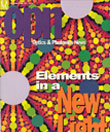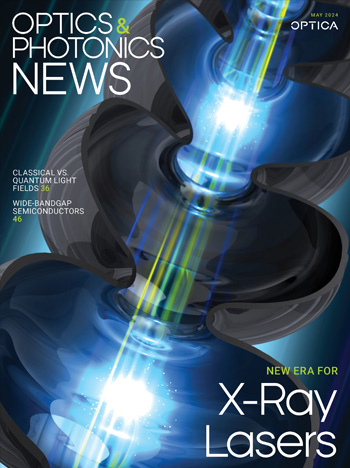
September 1996 Issue
- Real-World Applications Of Laser Spectroscopy
- Laser-Based Combustion Diagnostics
- Environmental Monitoring Of Gases Using Near-Infrared Diode Lasers
- Mid-Infrared Tunable Laser Environmental Tracer Species Measurement
- Spectroscopic Analysis of Heavy Metal Contamination of the Environment
- Browse all Issues
Feature Articles
Real-World Applications Of Laser Spectroscopy
Laser spectroscopic techniques are powerful tools for monitoring real-world phenomena. A wide variety of methods for establishing spectroscopic contact with a species exist: Absorption, emission, fluorescence, Raman scattering, acousto-optic, and opto-galvanic phenomena. Extreme sensitivity and specificity characterize the methods, which can be used for in situ monitoring and, in some cases, for remote sensing. Combustion diagnostics and atmospheric pollution monitoring are examples of gas-phase applications, while vegetation studies and early cancer detection illustrate interactions with solids.
by Sune SvanbergLaser-Based Combustion Diagnostics
Laser-based spectroscopy and scattering methods are now important tools for researchers trying to understand the combustion process.
by Larry A. RahnEnvironmental Monitoring Of Gases Using Near-Infrared Diode Lasers
Southwest Sciences' researcher Chris Hovde in front of a prototype near-Infrared, diode laser instrument used for measuring methane fluxes. The Instrument combines rapid (10 Hz) measurements of methane concentrations with wind velocity to determine fluxes. An open-air, multiple-pass, optical cell allows ~40 ppb resolution in methane concentrations. The photograph was taken during-field measurements over Arctic tundra on the Alaskan North slope near Prudhoe Bay.
by David BomseMid-Infrared Tunable Laser Environmental Tracer Species Measurement
Current environmental problems from global scale issues, such as stratospheric ozone depletion and greenhouse gas-driven climate warming, to local problems, such as soil and groundwater contamination or urban photochemical smog, all require the accurate and rapid measurement of trace pollutant concentrations.
by C.E. Kolb, J.B. McManus, D.D. Nelson, J.C. Wormhoudt and M.S. ZahniserSpectroscopic Analysis of Heavy Metal Contamination of the Environment
Contamination of the environment by hazardous chemicals is a growing area of worldwide concern due to the resulting damage that may occur to living creatures as well as to the ecosystem. Heavy metals are a class of chemicals of particular concern due to the toxic effects on the human body and the possibility of bioaccumulation in plants and animals. Metals such as lead, mercury, arsenic, cadmium, beryllium, and chromium are easily recognized as being potentially very dangerous. Therefore, the mere possibility of a site contaminated by such metals is typically a cause for alarm.
by Andrzej W. Miziolek and Ernesto R. Cespedes
![Infinity Mirrored Room– Brilliance of the Souls 2014 by artist Yayoi Kusama. [© YAYOI KUSAMA]](https://opnmedia.blob.core.windows.net/$web/opn/media/images/articles/2024/0724/departments/202407-cover-web.jpg?ext=.jpg)
![An experimental scheme demonstrated by researchers at Princeton and Yale universities, USA, can convert physical noise into errors that can be corrected more easily. [F. Wojciechowski, Princeton University]](https://opnmedia.blob.core.windows.net/$web/opn/media/images/articles/2024/0624/departments/202406-cover-web.jpg?ext=.jpg)
